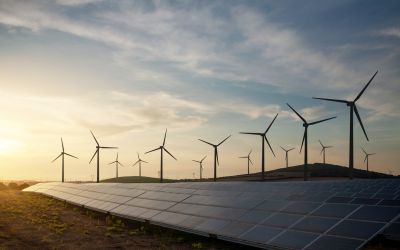Just 7% of global banks’ energy financing goes to renewables, new data shows
Major global banks are standing in the way of climate targets with new data showing just 7% of their financing for energy companies went to renewables between 2016 and 2022.

Major global banks are standing in the way of climate targets with new data showing just 7% of their financing for energy companies went to renewables between 2016 and 2022.
The data, produced for Sierra Club, Fair Finance International, BankTrack and Rainforest Action Network, indicates major failings by financial institutions to help meet global commitments on net zero emissions by 2050 since it shows shockingly low financial support through loans and bond underwriting for clean energy.
It calls into question pledges from the industry-led Glasgow Financial Alliance for Net Zero (GFANZ), whose commissioned research shows low carbon energy investments need to account for at least 80% of energy investments compared to fossil fuels (4:1) by 2030 to reach climate goals.
Adele Shraiman, Campaign Representative with the Sierra Club’s Fossil-Free Finance campaign, said: “Many banks claim that they continue to provide financing for fossil fuel clients in order to help those clients in their climate transition. This data calls into question that claim, and gives proof that banks must get serious about financing the clean energy transition. In order to reach the goals of the Paris Agreement, we know that investments in renewable energy must dramatically increase this decade. Banks must take bigger strides to scale up their financing for renewable energy and phase out their financing for fossil fuels — and fast."
Bank loans and bond underwriting for renewables went from 7% in 2016 of the overall financing of the energy companies examined to a high of 10% in 2021 but virtually stagnated between these years, rather than showing any positive trend. The total amounts of clean energy financing in these years remained abysmally low: $23.2 billion in 2016 and $34.5 billion in 2021.
Overall the 60 banks saw $2.5 trillion in loans and bond underwriting provided to the companies examined for energy activities between January 2016 and July 2022. Of that, $2.3 trillion was related to the production of fossil fuel energy and just $178 billion was related to clean energy activities such as wind and solar.
Surprisingly, the data reveals that banks that are members of GFANZ actually provide less financing for renewable energy, on average, than their counterparts that are not in the alliance. Leaders of the industry-led group, which is committed to accelerating the energy transition by the finance sector, are vocal about the need for funding for low-carbon energy to quadruple that of dirtier energy like coal, oil, and gas, by the end of this decade.
Maaike Beenes, campaign lead at BankTrack said: “Given that GFANZ co-chair Mark Carney has publicly recognised the need to rapidly increase the ratio of green financing to at least 4 times that of fossil fuel financing, it is alarming that GFANZ members have in fact financed less green energy than those outside the alliance. To stop the climate crisis from further unfolding, banks must stop dragging their feet and start shifting their financing away from fossil fuels towards green energy.”
Find out more here.






